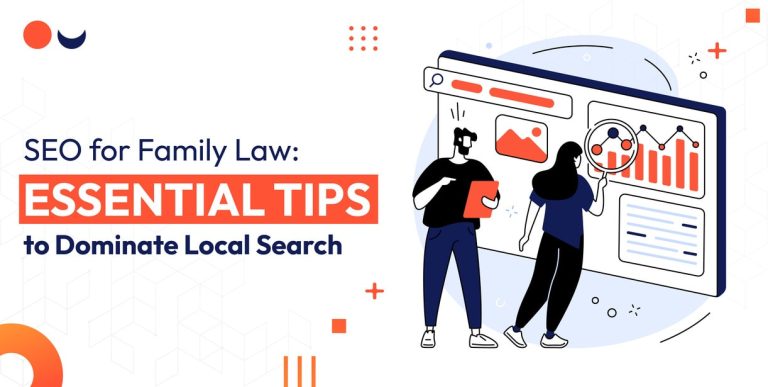A well-structured e-commerce website is critical for success in the ever-expanding world of online buying. A well optimized e-commerce site structure improves user experience and search engine exposure, resulting in more significant traffic and conversions. In this post, we will look at why eCommerce site structure is essential and offer practical advice on how to optimize your e-commerce website structure for optimal effectiveness.
A well-designed e-commerce website allows consumers to effortlessly traverse your product catalog and locate what they’re looking for. By organizing your products into categories and subcategories, you may establish a logical structure that takes visitors from broad product categories to individual goods. This enhances the user experience by minimizing the time and effort required to find relevant products. Furthermore, a well-structured website makes it easier for search engines to scan and index your pages, improving the possibility of your products appearing in search results and garnering organic visitors.
To optimize your e-commerce website’s structure, undertake keyword research to identify the search phrases your target audience is using. Use these keywords to create meaningful and descriptive category and product page titles, URLs, and meta tags. Not only will this increase search engine visibility, but it will also provide users with a clear idea of the content and purpose of each page.
Why Does eCommerce Site Structure Matter?
Your site structure e-commerce store is critical in deciding how easily consumers can navigate your website and find the products they seek. Here are some of the reasons why e-commerce site structure is important:
Enhanced Conversion Rates:
Improved conversion rates result from an optimized site structure. Users are more likely to purchase when they can effortlessly navigate your e-commerce website and find their desired products. A seamless and streamlined user experience minimizes friction in the purchasing process and enhances conversion rates, ultimately increasing sales and revenue.
Improved Page Load Speed:
A well-structured e-commerce site allows for fast page loading, which is critical for customer retention and lower bounce rates. When the structure of your website is optimized, it will enable shorter loading times, preventing visitors from becoming frustrated and abandoning your website due to bad performance. According to studies, even a one-second delay in page load time can cause a considerable decline in conversion rates; optimizing your site structure is critical for creating a fast and seamless surfing experience.
Simple Site Maintenance:
A well-organized web structure makes site upkeep and updating easier. It is easier to make updates, add new products, edit information, and apply design changes when your e-commerce website structure is organized correctly. A well-organized backend structure makes it easier to operate your website, saving you time and effort in the long term.
Opportunities for Effective Cross-Selling and Upselling:
A well-structured website allows for excellent cross-selling and upselling opportunities. You can steer visitors to complementary or higher-priced items by strategically organizing your product categories and implementing related product recommendations. This improves the user experience, raises average order value, and increases your revenue potential.
Mobile-Friendly Experience:
With the increasing popularity of mobile devices for online shopping, having a mobile-friendly site layout is critical. It is essential to have a responsive design that adapts to multiple screen sizes and gives a consistent browsing experience across devices. Optimizing your site layout for mobile guarantees customers can explore and shop from their smartphones or tablets, increasing user satisfaction and driving mobile conversions.
Improved SEO through Structured Data:
Structured data markup can be effectively implemented with an optimized e-commerce site structure. Structured data gives search engines more information about your products, allowing for rich snippets and improved search result displays. You may boost your website’s visibility in search results and raise click-through rates by utilizing structured data, as people are more inclined to click on results that provide more detailed information about the products they are searching for.
Scalability and Growth Potential:
A well-structured e-commerce site lays the groundwork for scalability and future expansion. As your company grows and additional goods and categories are added, having a flexible site structure allows you to adapt new additions without sacrificing usability or performance. A scalable site framework enables smooth development, guaranteeing that your e-commerce store may grow in tandem with the needs of your business.
Optimizing your ecommerce store’s site structure is critical for offering a great customer experience, increasing conversion rates, and driving overall business growth. You can build a well-structured e-commerce website that provides results by focusing on straightforward navigation, precise categorization, fast page load times, mobile-friendliness, and adequate cross-selling opportunities. To ensure continual optimization, analyze and update your site structure regularly depending on user behavior and industry trends. Invest the time and effort into optimizing the design of your e-commerce site, and you’ll reap the benefits of enhanced performance and success in the competitive world of online shopping.
Optimizing Your Ecommerce Website Structure
Now that we understand the importance of eCommerce site structure, let’s dive into some practical tips to optimize it for better performance.
1. Create Clear and Logical Categories:
Begin by categorizing your products into distinct and logical groups. Sort comparable items together and ensure your category titles are informative and easy to remember. Avoid using generic names and instead employ keywords your target audience is likely to look for. If you offer apparel, for example, use specific categories such as “Men’s Shirts” or “Women’s Dresses.”
2. Implement a Hierarchical Structure:
Creating a hierarchical structure allows you to establish subcategories and sub-subcategories, making your website easier to traverse. Visitors can use this structure to find specific product pages without feeling overwhelmed. It also assists search engines in identifying the relationships between various pages, which might benefit SEO efforts.
3. Use Breadcrumbs:
Breadcrumbs are a type of navigational assistance that displays viewers where they have been on your website. They not only improve user experience but also give search engines context. Breadcrumbs are often found at the top of a page, representing the hierarchy of categories and subcategories the user navigated to reach the current page. Including breadcrumbs in the structure of your e-commerce site enhances both usability and SEO.
4. Optimize URL Structure:
Make sure your URLs are clean, descriptive, and easy to remember. Avoid using long, intricate strings of numbers or characters that are irrelevant. Instead, use keywords relating to the product or category in the URL. This lets readers better grasp the page’s content before clicking and helps search engines index your pages more effectively.
5. Implement Internal Linking:
Internal linking is the process of connecting relevant pages on your website. You can create a network of interconnected material by deliberately linking related items, categories, or informational pages. Internal linking not only assists users in navigating your website, but it also distributes authority and increases the overall exposure of your content. It can also help search engines discover and index your material more effectively.
6. Ensure Mobile Responsiveness:
With the rising number of consumers visiting e-commerce websites via mobile devices, optimizing your site structure for mobile responsiveness is critical. Ensure your navigation menu is easy to use and accessible on small displays. Use responsive design strategies to provide a unified browsing experience across all devices, increasing user satisfaction and search engine results.
7. Monitor and Analyze User Behavior:
Monitor and analyze user behavior on your e-commerce site regularly to detect any potential faults or opportunities for improvement. Use Google Analytics to learn about user browsing patterns, popular product categories, and bounce rates. This information can help you improve the structure of your site, discover navigation bottlenecks, and optimize the user trip.
Conclusion
Optimizing your e-commerce store’s site structure is critical for providing a seamless user experience, enhancing search engine presence, and ultimately driving conversions. You may ensure that your e-commerce site structure is optimized for success by incorporating clear and logical categories, hierarchical structures, breadcrumbs, optimized URLs, internal linking, mobile responsiveness, and continual monitoring. Remember that a well-structured website benefits your users and assists search engines in efficiently understanding and ranking your content. Begin adopting these methods right away and watch your e-commerce business thrive.







